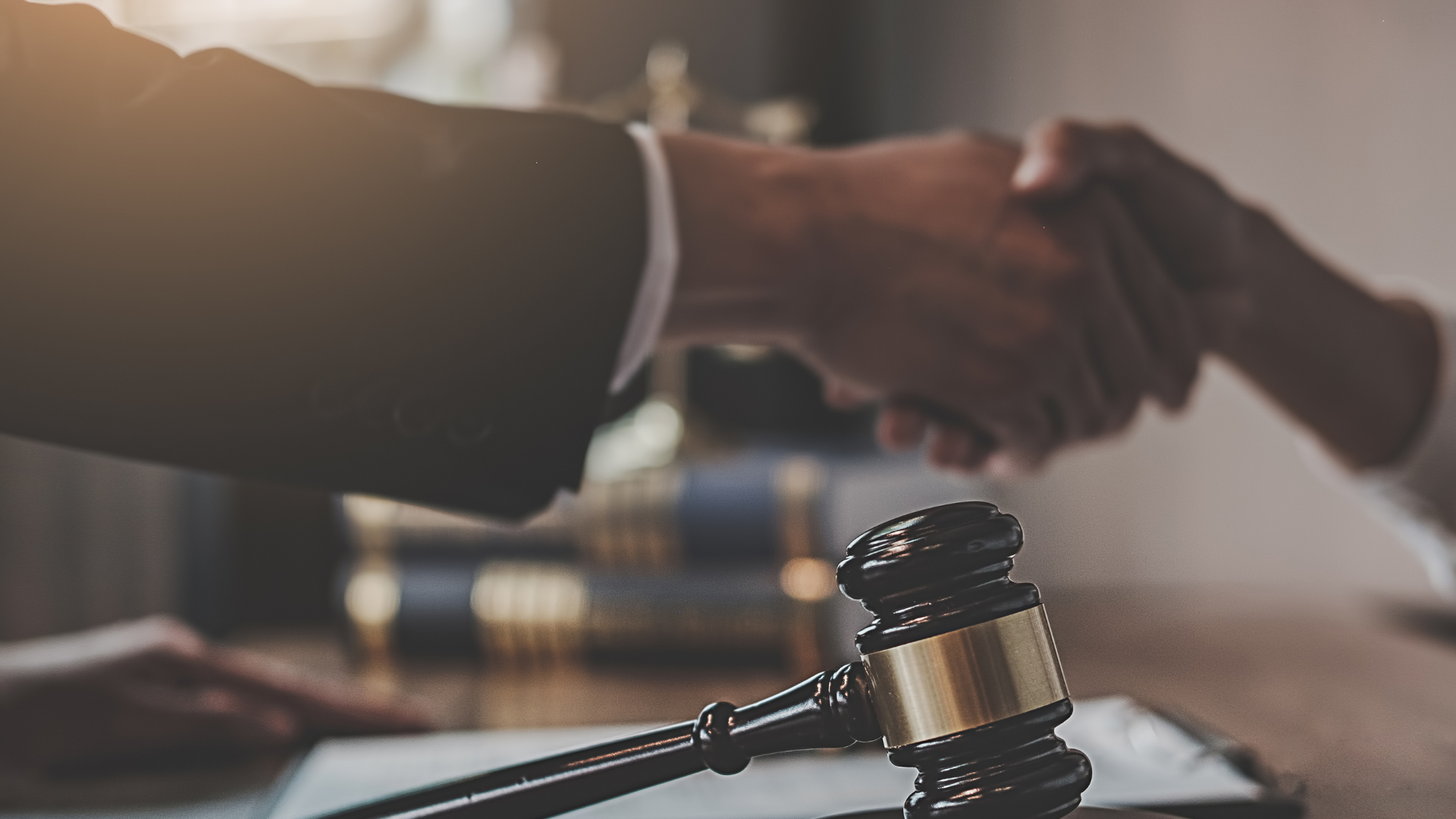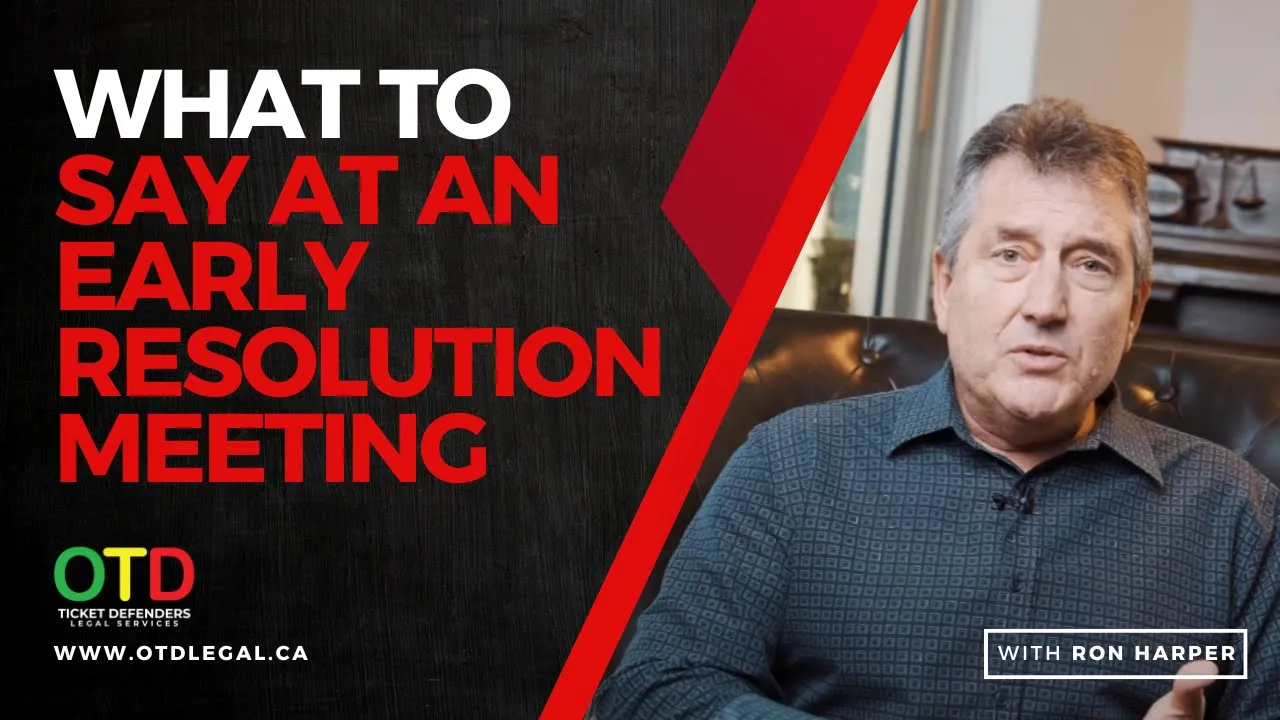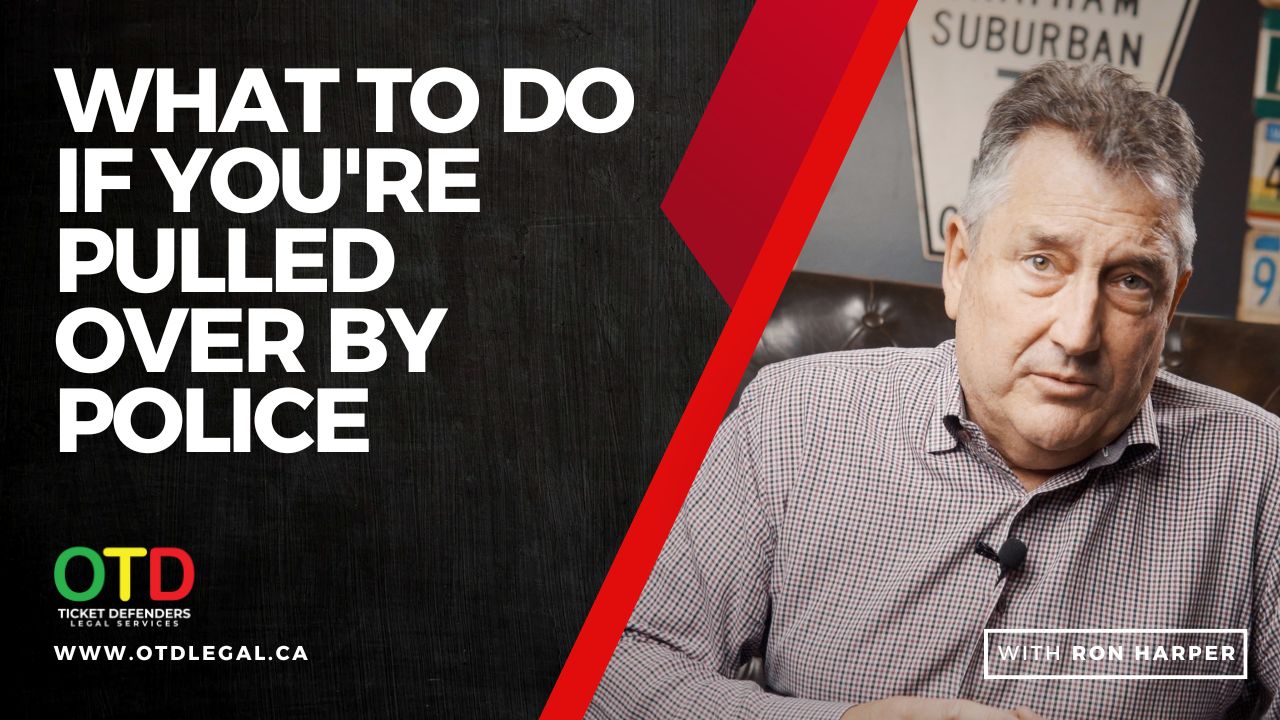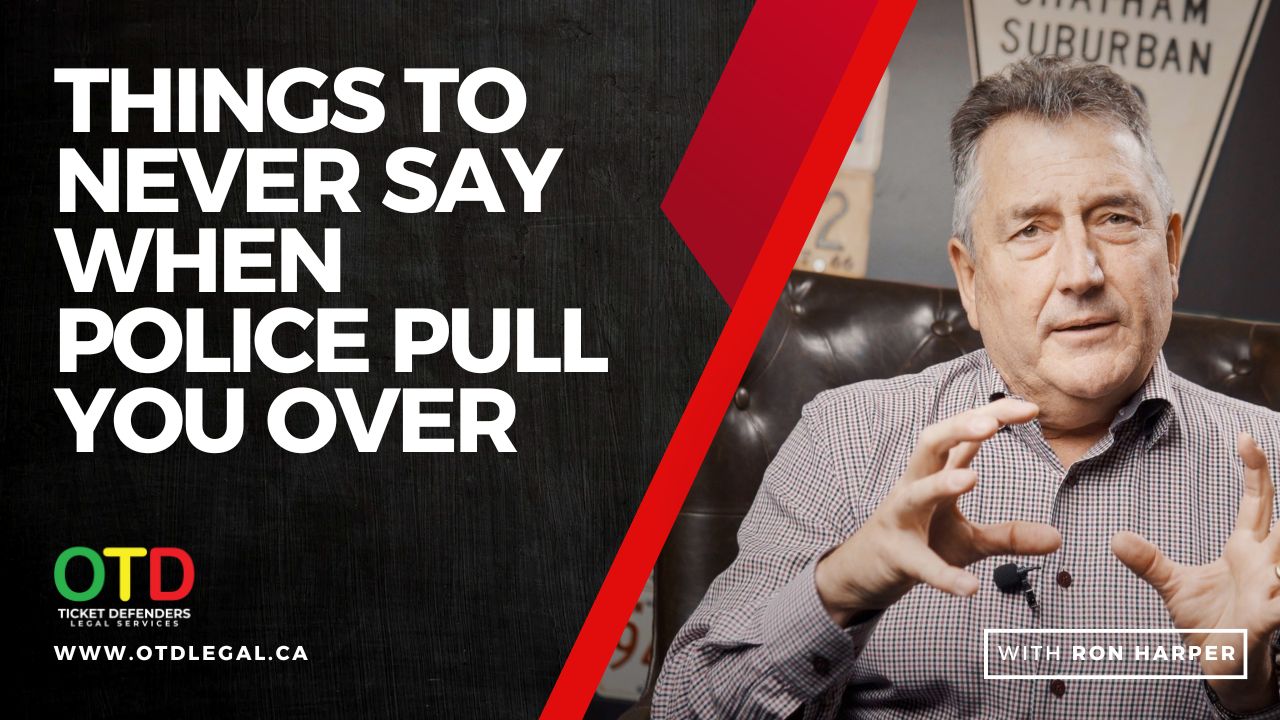Fighting a traffic ticket in Ontario? Your defence is only as strong as the evidence behind it – and how strategically you use it. From dashcam footage to procedural errors, knowing what counts (and what doesn’t) can be the difference between conviction and dismissal.
Important Things to Know:
- Objective evidence wins cases: Dashcam footage, clear photos, and GPS logs are more persuasive than your word alone. Time-stamped proof is especially powerful.
- Photos tell your story: Images of hidden signs, poor road conditions, or obstructed views can support defences like “mistake of fact.”
- Witnesses can help – but neutrality matters: A bystander is more credible than a passenger or family member, though all can add value.
- Disclosure reveals the cracks: Requesting the officer’s notes might expose inconsistencies or missing elements in the Crown’s case that can lead to dismissal.
- Not all paperwork errors are equal: Fatal procedural errors – like missing signatures or legal codes – can get a ticket tossed. Minor typos usually won’t.
- Evidence supports legal defences: For strict liability offences, use evidence to build a “due diligence” defence or show a reasonable mistake of fact.
- Experts can make the difference: In complex cases, mechanics or accident reconstructionists may be necessary to validate your explanation.
- Presentation matters as much as content: It’s not just what you have—it’s how you frame it that convinces a court.
Why This Matters: Many people think fighting a ticket is just telling their side of the story. But without the right type of evidence – or legal strategy to tie it all together – you’re unlikely to succeed. Whether it’s using dashcam footage to contradict an officer’s version of events or spotting a fatal flaw in the ticket itself, the right approach can save you from demerit points, licence suspensions, and years of higher insurance premiums.
Read on to learn what evidence strengthens your case – and how a legal professional can turn it into a winning argument in court.
That sinking feeling when you see flashing lights in your rearview mirror is universal. Your first thought after the officer hands you that ticket? “How can I possibly fight this?” While it might feel like your word against theirs, the truth is that a strong defence is built on a foundation of credible evidence, strategic analysis, and proper legal application.
Fighting a traffic ticket isn’t just about collecting facts—it’s about building a legal argument brick by brick. A single photo or witness statement is just one brick. It’s only when they’re assembled correctly, with legal expertise as the mortar, that they form an unbreakable wall of defence.
Your First 60 Minutes: 5 Steps to Protect Your Defence
- Secure objective proof before memories fade: Dashcam footage and clear photos often provide the strongest foundation for your case
- Document everything immediately: Road conditions, weather, and witness information change or disappear quickly
- Request officer disclosure early: The prosecution’s own evidence often contains the keys to your defence
- Look beyond the obvious: Procedural errors and technical flaws can invalidate an entire case
- Understand the hierarchy: It’s not just what evidence you have, but how strategically you present it
Part 1: Building Your Case with Objective Proof
Using dashcam footage to create an unbiased record
Consider a scenario where an officer claims you performed an unsafe lane change. Dashcam footage can do more than just show your vehicle’s path; it can reveal the other driver’s erratic behaviour, transforming the narrative from your mistake to a necessary defensive manoeuvre. This is the difference between a simple recording and strategic evidence.
Modern dashcams provide several critical advantages in traffic ticket defence. The objective documentation captures your driving behaviour, road conditions, and even police conduct during the stop. Time and location stamps add crucial context that can verify or contradict an officer’s timeline of events.
However, dashcam footage is a double-edged sword. While it can prove your innocence, it might also confirm the officer’s version of events. The key is proper evaluation before submission. You must also ensure the footage is authentic and unaltered, which may require proving the recording device was functioning correctly.
Privacy considerations matter too. While recording public roads is generally permissible in Ontario, recording private conversations without consent can raise privacy issues that may render footage inadmissible.
The power of a picture: Using photographic evidence strategically
Timing is everything with photographic evidence. If it’s safe to do so, document the scene immediately after receiving your ticket. The most powerful photos capture elements that support your defence narrative.
Obscured, damaged, or missing signage represents the number one use case for photographic evidence. A time-stamped photo of a stop sign completely hidden by a fallen tree branch can form the foundation of a defence. Similarly, documenting poor road conditions like potholes or faded lane markings can support arguments about necessary driving adjustments.
Clear, well-lit photographs that accurately represent the scene at the time of the alleged offence carry significant weight in court. The key is ensuring your photos are unedited and properly timestamped to maintain their credibility.
Beyond your word: The power of a corroborating witness
Witness testimony can provide critical support by corroborating your version of events or challenging the officer’s account. However, not all witnesses carry equal weight in court.
Neutral witnesses, such as bystanders, tend to carry more credibility than close friends or family members, as they’re perceived as more impartial. A passenger in your vehicle can still provide valuable testimony, but their relationship to you affects how the court weighs their statements.
The key is gathering their information immediately. Get their name, contact details, and a written statement while the incident is fresh in their memory. Witnesses may need to provide sworn statements or appear in court to testify under oath, so preparing them for this process is crucial.
Part 2: Scrutinizing the Crown’s Case for Weaknesses
Finding inconsistencies: How officer disclosure reveals prosecution weaknesses
Requesting officer disclosure is a fundamental step in preparing your traffic ticket defence. This isn’t just a review – it’s a search for inconsistencies, procedural errors, and gaps that can undermine the prosecution’s case.
Disclosure typically includes the investigating officer’s notes, witness statements, accident reports, and any other relevant documents the prosecution intends to use. For speeding tickets involving radar or laser devices, you should obtain the relevant manual for the device used.
The real value lies in what’s missing or contradictory. We once had a case where an officer’s notes mentioned “heavy traffic,” but the client’s dashcam showed an empty road. This single inconsistency created the reasonable doubt needed to have the charge withdrawn.
To request disclosure, you must first request and receive a court date. Most municipalities provide specific disclosure request forms that can be submitted via email, fax, mail, or in person. Understanding courtroom and legal terminology helps you navigate this process more effectively.
Was the ticket issued correctly? Identifying fatal procedural errors
Not all mistakes are created equal when it comes to traffic tickets. Minor errors like misspelled names or incorrect licence numbers can typically be amended by the Crown. However, fatal errors can invalidate the entire ticket.
Fatal errors include missing dates, incorrect legal codes, or lack of an officer’s signature. If a ticket is not “complete and regular on its face” and cannot be amended, especially if it affects your ability to mount a defence, it may be dismissed entirely.
The challenge lies in distinguishing between amendable and fatal errors. This requires detailed understanding of Ontario regulations and case law precedents. What appears to be a simple clerical mistake might actually be a procedural flaw that undermines the entire case. How these errors are handled – or mishandled – will directly affect the outcome of the case.
Part 3: Applying Legal Defences: Turning Evidence into Winning Arguments
The “due diligence” defence: Proving you took all reasonable care
The due diligence defence applies to strict liability offences, requiring you to demonstrate that you exercised reasonable care to prevent the violation. This is where all your evidence comes together to tell a story of responsible driving caught in unavoidable circumstances.
Evidence supporting due diligence might include maintenance records showing recent vehicle servicing, weather reports documenting sudden adverse conditions, or witness testimony about an emergency manoeuvre to avoid a collision. The key is proving you took all reasonable steps a prudent driver would take in similar circumstances.
You must prove this defence on a balance of probabilities, meaning it’s more likely than not that you acted with due diligence. This burden of proof makes the quality and presentation of your evidence crucial.
Arguing “due diligence”: What evidence supports this defence
A due diligence defence argues that you genuinely believed certain facts to be true, and if those facts were accurate, your actions wouldn’t constitute an offence. The classic example involves obscured or missing signage.
If you failed to stop at a stop sign because it was completely hidden by a fallen tree branch, your time-stamped photograph of the obscured sign becomes the evidence supporting your due diligence argument. The legal defence transforms your photographic evidence into a compelling narrative of reasonable behaviour based on mistaken circumstances.
This differs significantly from not knowing the law, which isn’t a valid defence. Not knowing the speed limit doesn’t excuse speeding, but reasonably believing a sign was posted differently due to obscured visibility can support your case.
When expert testimony becomes necessary
In complex cases, expert testimony can provide crucial insights that help the court understand technical aspects beyond common knowledge. Expert evidence is admissible when specialized knowledge is required that’s likely outside ordinary experience.
Common applications include accident reconstruction analysis, mechanical failure assessments, and visibility or environmental factor evaluations. For instance, an expert mechanic might testify about sudden brake failure that contributed to a speeding incident, supporting a due diligence defence.
The expert’s primary duty is to assist the court objectively, not advocate for either party. Their opinions must be fair, non-partisan, and within their area of expertise. Judges act as gatekeepers, ensuring expert evidence meets admissibility criteria and remains objective.
When professional expertise becomes essential
The inconsistencies or procedural errors uncovered in the Crown’s disclosure aren’t just interesting details – they’re the keys that unlock specific legal defences. However, determining if a procedural error is “fatal” to the Crown’s case requires deep understanding of case law and precedent.
This is where professional evaluation separates potential defence from successful outcome. Consider why you should fight your traffic ticket rather than simply paying the fine. As a former prosecutor explains, the long-term consequences of conviction often far exceed the immediate fine.
A skilled paralegal or lawyer can evaluate whether your dashcam footage helps or hurts your case before submission, identify which procedural errors are amendable versus fatal, and determine the strongest legal defence strategy based on your specific evidence.
The hierarchy of evidence: What carries the most weight?
Understanding how courts typically weigh different types of evidence helps you prioritise your defence strategy:
- Objective, verifiable data: GPS records, dashcam footage with timestamps
- Clear photographic evidence: Unedited, timestamped photos of relevant conditions
- Neutral third-party witness testimony: Unbiased observers with no relationship to you
- Defendant and biased witness testimony: Your account and statements from family or friends
Context matters significantly, but this hierarchy provides a useful framework for building your strongest possible case.
Frequently asked questions
What if I don’t have any physical evidence like video or photos?
Even without physical evidence, you can still build a strong defence through witness statements, officer disclosure analysis, and procedural error identification. Many successful defences rely primarily on inconsistencies in the prosecution’s case rather than defendant-generated evidence. Remember, it is up to the Crown to provide the necessary evidence to prove the case against you.
My dashcam footage isn’t perfect. Should I still submit it?
Imperfect footage can still be valuable, but professional evaluation is crucial before submission. Sometimes partial footage that doesn’t show the complete incident can actually hurt your case by raising more questions than it answers.
How long do I have to request disclosure from the prosecutor?
Disclosure should be requested immediately after you’ve received your court date. Timelines vary by municipality, but it’s generally available once court proceedings begin. Don’t wait until the last minute – thorough disclosure review takes time.
Is a witness statement from a family member worthless?
Not worthless, but less credible than neutral witnesses. Family members can still provide valuable testimony, especially if they observed details the officer missed or can corroborate your version of events.
Can a ticket really be dismissed just because of a paperwork error?
Yes, but only if the error is “fatal” rather than amendable. Most clerical mistakes can be corrected by the Crown, but significant procedural errors that affect the validity of the charge can lead to dismissal if handled properly
Why professional representation sees the winning angle you might miss
You might have compelling photographic evidence, but do you know it supports a defence? You might spot a typo or omission on your ticket, but is it fatal or amendable? The difference between collecting evidence and building a legal argument often determines the outcome.
Professional representation brings several critical advantages: understanding the rules of evidence, identifying fatal procedural flaws, and framing everything into a persuasive legal argument. It’s not just about what evidence you have – it’s about strategic presentation that maximises your chances of success.
Before you decide to pay your ticket and accept the consequences, consider investing in a consultation to understand the true strength of your case. Contact OTD Legal today to discuss your options and protect your driving record.







